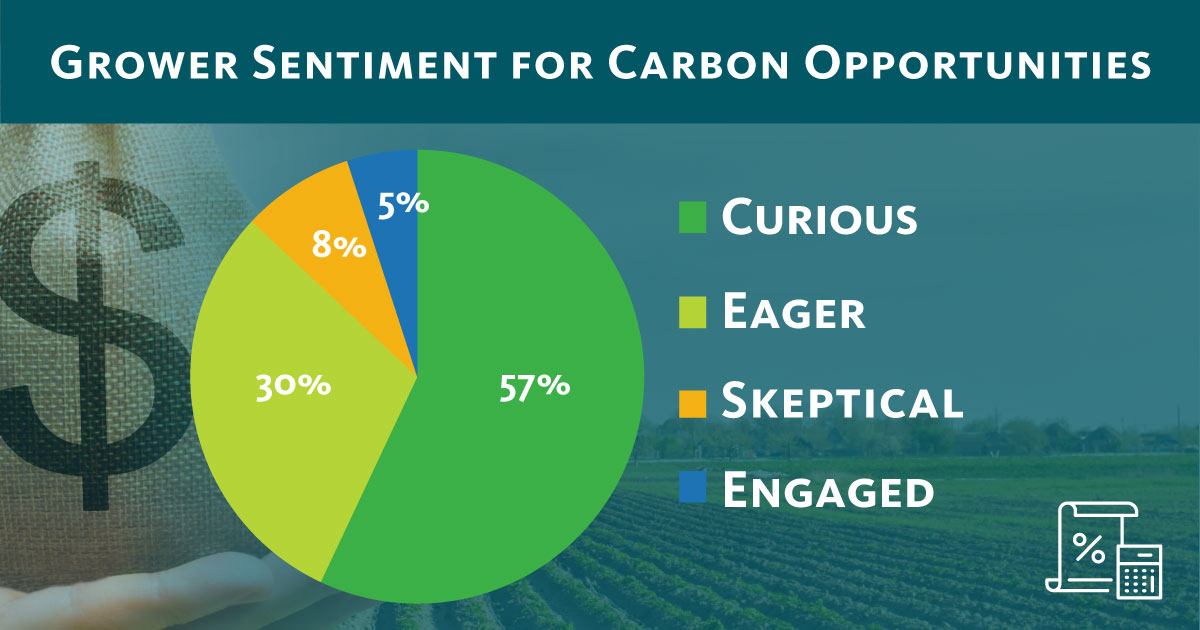What a year it’s been for carbon markets. The subject has really taken the food and agriculture industry by storm. After many months of discussion, do producers and sustainability experts think there are possibilities for growers to create and secure opportunities from it right now?
Are carbon markets considered to be: an optimistic venture, cautiously optimistic possibility, or still a wild and potentially unsuccessful quest?
Producers Report Cautious Optimism
Right now, there are still only a small percentage of farmers acting on opportunities to enter a carbon market. According to Farm Journal, only three percent of growers nationwide jumped onboard in 2021. Our recent poll showed similar results from growers:
- 5% are currently engaged in the carbon market and moving on opportunities
- 30% are eager to evaluate opportunities
- 57% are still curious about the carbon market
- 8% approach the market with skepticism

Expectations for the Carbon Market
We asked our sustainability advisors to describe the carbon market as it now stands – and whether they would approach it as an optimistic venture, a cautiously optimistic possibility, or a potentially unsuccessful quest…
Cautiously optimistic possibility – Laura Sands, lead Pinion sustainability advisor
“This survey is a great indicator of the tangled web of unknowns that exists right now. While we see potential in this market, it’s important to remain cautious and seek out advice that is tailored to your individual operation while these programs mature,” says Sands.
A potentially unsuccessful quest – Brian Kuehl, Pinion ag policy advisor
“As of today, there aren’t clear-cut opportunities for most producers to be able to put optimism behind it, but this is expected to change with new standardization and additional financial incentives. Although the Growing Climate Solutions Act has not passed in the House, ag industry coalitions like the Food and Agriculture Climate Alliance are working hard to make this a priority at the federal level. We also expect this to be on the list for the 2023 Farm Bill,” says Kuehl.
Cautiously optimistic possibility – Lisa Becker, Pinion sustainability advisor
“Regardless of the program, it really comes down to whether an opportunity is right for your individual operation. Different geographies, cropping systems, eligibility requirements, land ownership agreements, data platforms, and expectations can affect your carbon score and the financial implications of any required practice transitions,” says Becker.
Related Read: 3 Ways Producers Can Prepare for the Future of Carbon Opportunities
Before entering a carbon contract, it is critical to understand what you are signing on to and to deeply assess your operation’s viability. While opportunities do exist for producers, it’s important to meet with an advisor to ensure opportunities really exist for your individual operation.
Pinion’s Advisory team of sustainability specialists help landowners, farmers, and ranchers to explore whether a carbon program is in the best interest of the farm or ranch for the long run. Contact a Pinion sustainability advisor to learn more.










